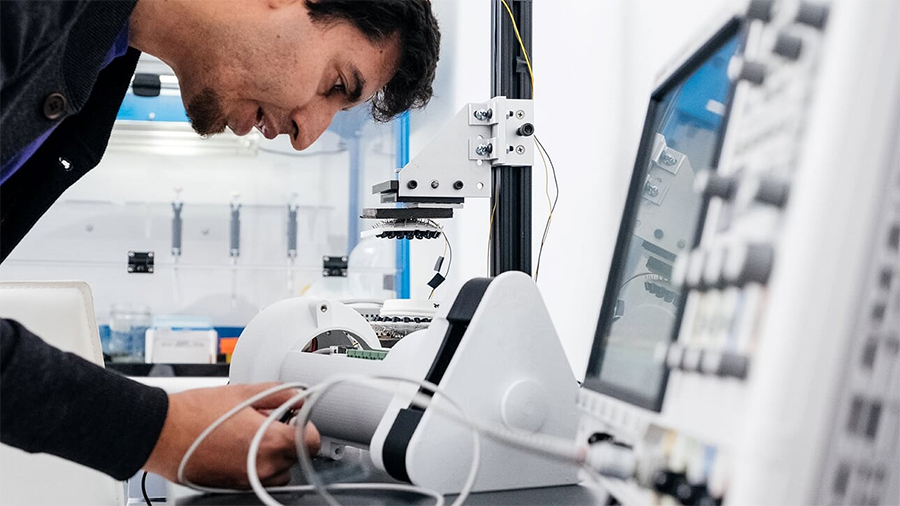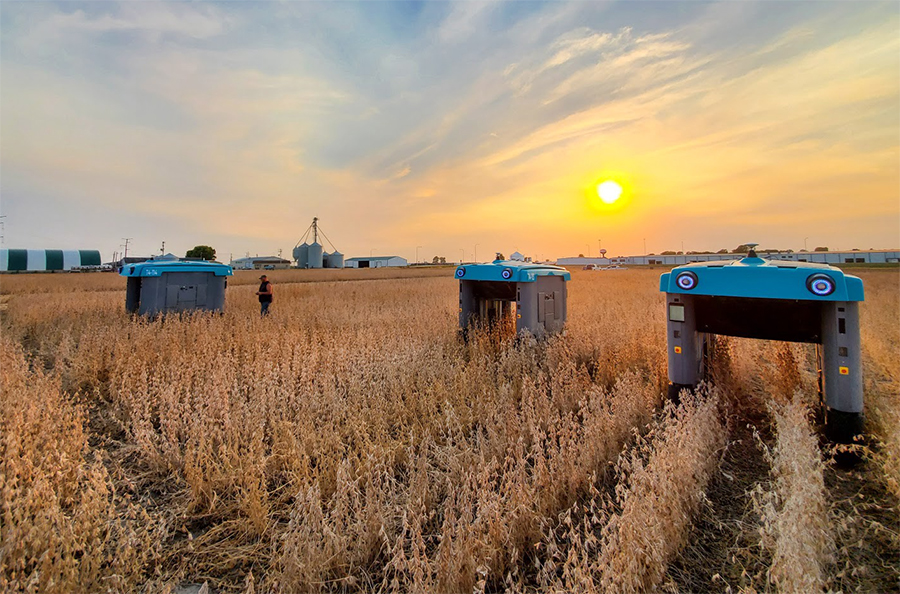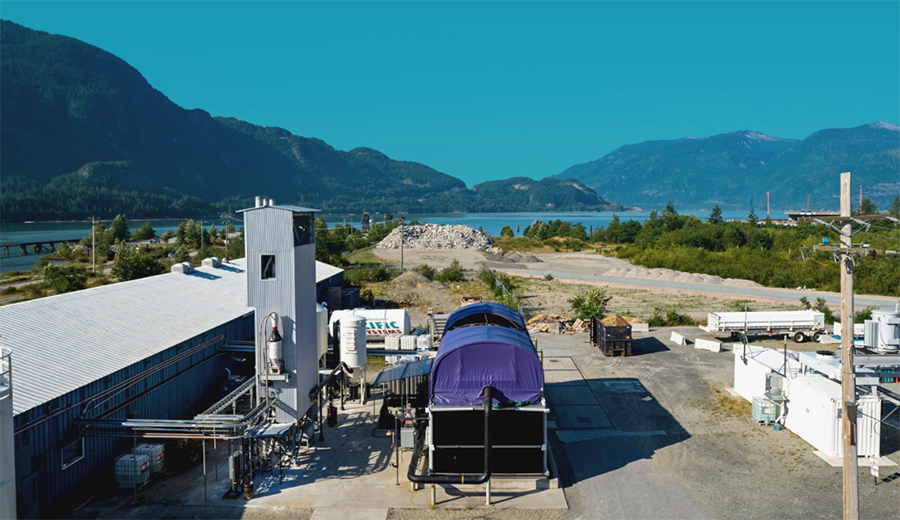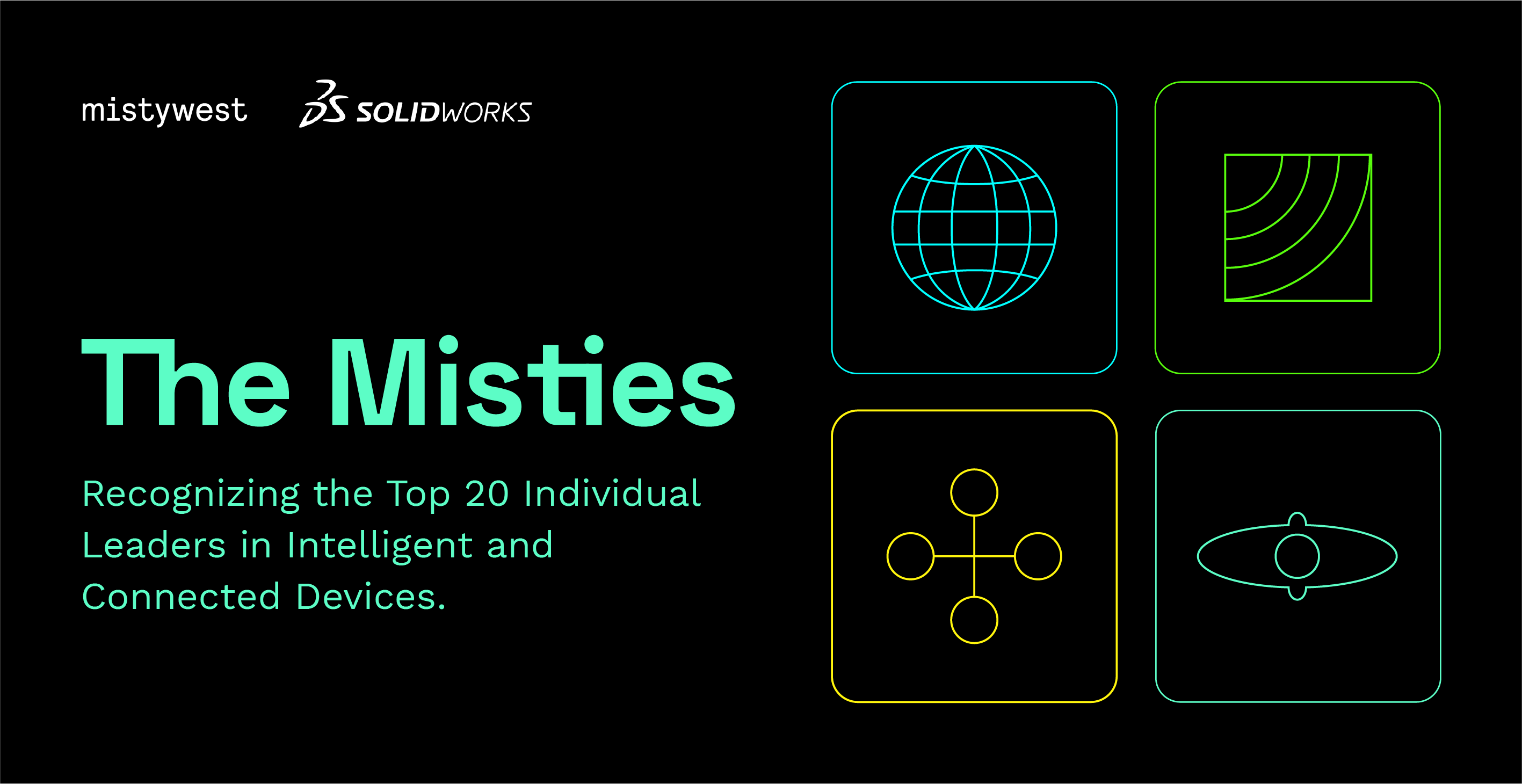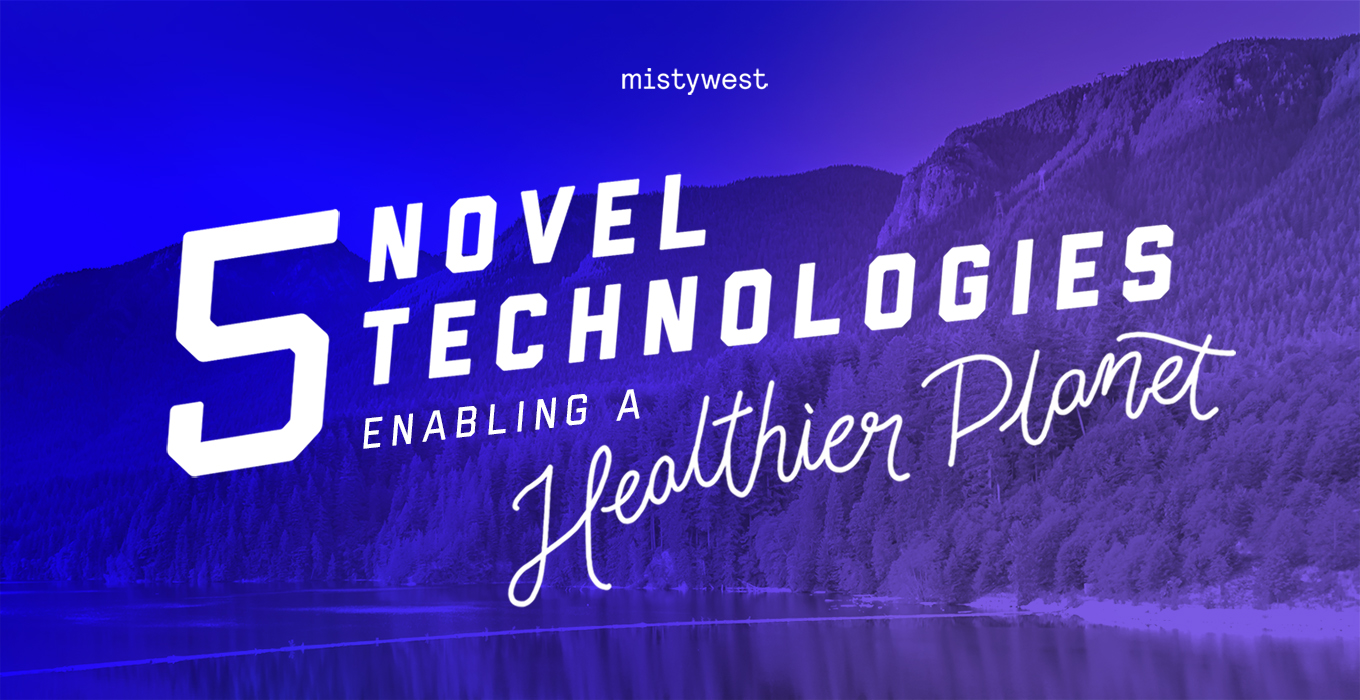
BLOG
5 Novel Technologies Enabling a Healthier Planet
WRITTEN BY MADISON REID, BRAND LEAD AT MISTYWEST
“Technology. The cause of–and solution to–all of life’s problems.” – Homer Simpson
While the above quote is not exactly what Homer said, it’s certainly applicable when we consider the incredible advancements technology has brought us in the last 150, or 50, or 10 years. Who now can imagine life without smartphones, let alone without electricity or motor vehicles?
And as we all know, the industrialization of the planet has brought unintended consequences ranging from unsustainable farming practices, to air pollution from motor vehicle emissions, to the depletion of lithium mining resources for batteries… oh, the list goes on.
MistyWest’s engineers and scientists are on a mission to create novel technologies to advance the United Nations’ Sustainable Development Goals; a set of 17 goals in a universal call to action to end poverty, protect the planet and ensure that all people enjoy peace and prosperity by 2030.
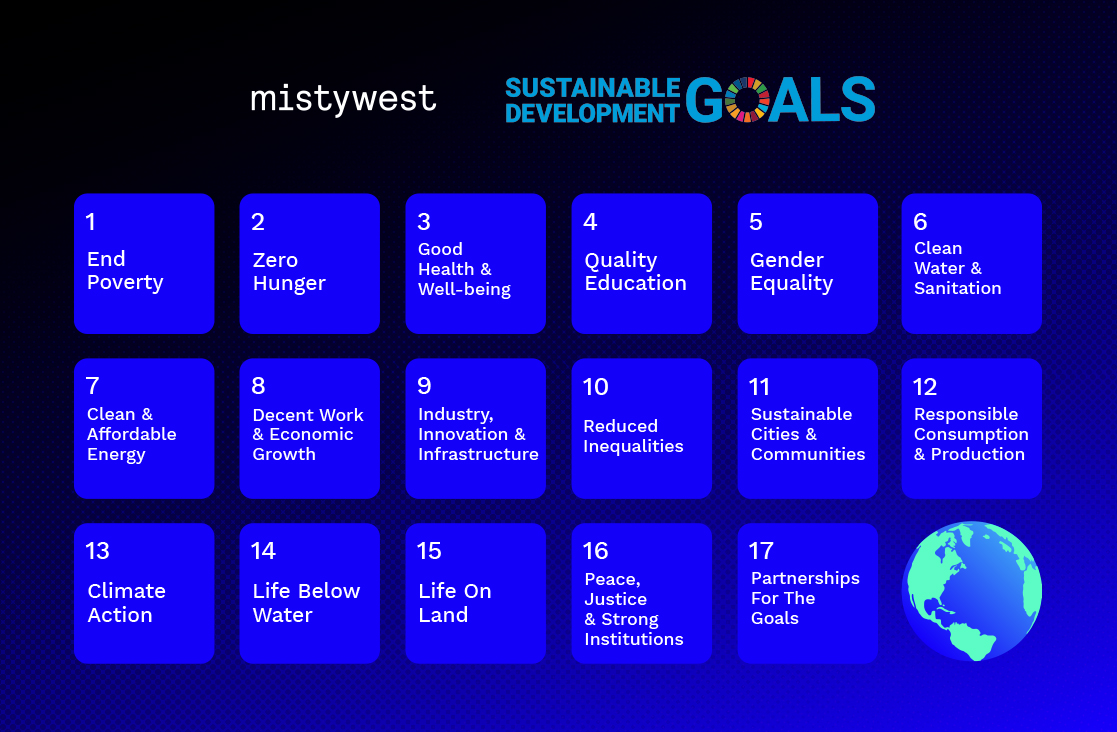
The UN’S Sustainable Development Goals
Ambitious? Perhaps. But actions are currently being taken by companies and innovators around the world to develop new and novel solutions to some of the world’s most challenging problems. In recognition of Earth Day on April 22, MistyWest wants to call attention to 5 of those novel technologies that are being utilized to bring us a more inclusively abundant future, and remind us of technology’s power as a force for good.
Microsoft Premonition genome analyzing robots
Microsoft Premonition’s pathogen detecting robotic biologists
UN SDG: Good Health & Well being (3)
Disease epidemics have impacted every society and economy in human history, and the traditional methods for intervention have typically been reactive–meaning, once an outbreak has already occurred–rather than preventative.
Microsoft Premonition knows the key to reducing future epidemics is the early detection of potential pathogens before they cause large disease outbreaks. The project’s goal is scalable monitoring of the environment through use of robotic smart traps and genomics to detect early disease threats.
Premonition’s robotic biologists collect blood-sucking insects that transmit pathogens, such as mosquitoes, and digitize their behaviours at high resolution. This allows better understanding of how mosquitoes move through the environment, while Premonition’s cloud-scale genomic analyses can detect microorganisms and viruses in specimens in order to spot transmission patterns.
While Premonition’s technology may not be the cure for future global disease outbreaks, the comprehensive data they collect will offer time for researchers to develop new treatments, public health organizations to prepare responses, and individuals to minimize their own exposure risks long before a disease becomes a pandemic.
X’s buggy prototypes in a soybean field
The robotic plant monitoring system Mineral from X
UN SDG: Zero Hunger (2), Responsible Consumption + Production (12), Life on Land (15)
Simply put: we aren’t growing enough food to continue feeding the planet’s population.
Previously, our approach to this issue has been massively limiting the different types of crops we grow and maximizing the output of a very small variety of plants. The problem is this approach eventually leads to reduced diversity of the soil’s microbiome, depletion of its nutrients and minerals, and diminishing of carbon.
A self proclaimed ‘moonshot factory’, X is no stranger to seeking solutions to some of the world’s toughest challenges. After years of surveying farmers and crop producers around the globe, the X team arrived at the question “What if new technologies could help us embrace nature’s diversity and complexity, instead of simplifying it?”
The X team developed a prototype low-emission robotic plant buggy–aptly named Mineral–that can inspect crops, from sprout to harvest, with computer vision. The imagery collected by the electric powered Mineral buggy is combined with all of the readily available info on the soil, weather, and historical crop data to create a full picture of the crop’s conditions, and machine learning analyzes the data for patterns and insights into how the plants grow and interact with their environment.
The diverse data collected by Mineral’s robotics, sensing and software tools can enable growers to troubleshoot and treat individual plants and make better yield projections, thus resulting in less cost and environmental impact, and opening the door to new solutions to feed the population.
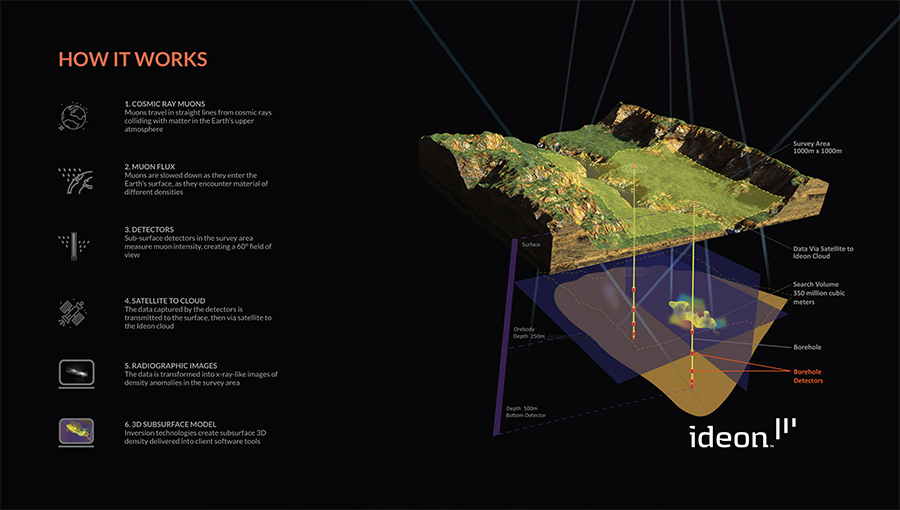
Ideon Technologies harnessing cosmic rays to see underground
UN SDG: Clean Energy (7), Industry + Infrastructure (9), Sustainable Cities (11), Climate Action (13)
A future where we rely on clean energy over fossil fuels is one of the most critical challenges the world faces in order to reduce the effects of climate change by 2030. However, mining minerals and metals–often considered just as controversial–is a key bottleneck in facilitating clean energy technologies such as wind, solar, geothermal power, and electrification.
Ideon Technologies is rising to the challenge of accessing those resources responsibly, through their vision of transforming subsurface discovery by allowing explorers to see clearly underground. Their novel application of cosmic-ray muon tomography harnesses the power of naturally occurring cosmic rays from space, detecting and measuring sub-atomic particles (called muons) to provide visibility as far as 1 km beneath the Earth’s surface.
Ideon’s technology offers mining companies higher certainty of discovery in what has traditionally been a very uncertain industry, helping reduce environmental impact, and improving efficiency. It makes sense that the company’s tagline is the simple yet effective “Drill less. Discover more.”
Carbon Engineering’s Direct Air Capture facility
Converting CO2 into clean air with Carbon Engineering
UN SDG: Clean Energy (7), Climate Action (13)
Carbon capturing is one of the most critical missions we face in order to reduce (and reverse) the effects of climate change. There are many technologies being tested for this purpose, and Carbon Engineering of Squamish, BC’s focus is the global deployment of their megaton-scale Direct Air Capture technology that captures carbon dioxide directly from the air with an engineered, mechanical system.
Using only air, water, and energy as inputs, Carbon Engineering’s carbon removal technology continuously captures carbon dioxide, and through a series of chemical reactions delivers it as a purified, compressed gas.
By working with a network of partners and companies around the world to build Direct Air Capture facilities, they are working towards their goal of making a direct impact on the climate challenge by capturing one million tons of carbon dioxide per year.
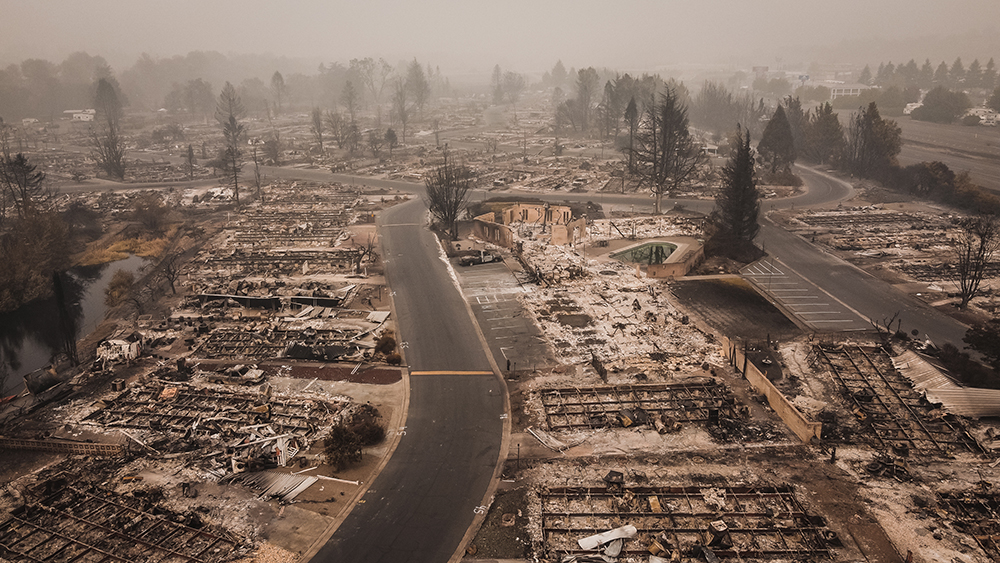
ARSAC using sound waves to drown forest fires
UN SDG: Life on Land (15)
If you live in the Pacific Northwest, California, or Australia, you don’t need me to tell you that wildfire seasons are starting earlier, lasting longer, and expanding in sheer size and frequency more than ever before. Wildfires are destroying the planet’s forests–earth’s best natural carbon-sequestering system–displacing wildlife and destroying ecosystems.
This urgent problem requires innovative solutions, and ARSAC (Automation and Robotic Sciences and Artificial Cognizance) is engineering one that is especially novel; extinguishing wildfires with sound waves, without use of water or chemicals.
ARSAC has been developing their acoustic fire extinguisher since 2015, where its initial prototypes were for smaller scale blazes. They have engineered a low frequency bass pressure wave (of 30 to 60Hz) that pushes oxygen away from the source of a flame, and are currently creating an integrated system of sensing technologies, IRS drones and acoustic extinguishers to detect and contain large wildfires.
Similar to Premonition’s predictive monitoring approach, ARSAC’s technology is intended to be a “sense and respond” system rather than a reactionary system. They aim to not only detect embers but also track the location and direction of fires to allow better containment by firefighters.

MistyWest’s actions to enable a healthier planet
Every new project that MistyWest considers is subjected to our Ethics Review process where any member of the team can express concerns about perceived negative impacts the work may cause. We employ this practice so we don’t lose sight of our mission and purpose, and so that Westies can take pride in the work they’re doing for our clients.
Outside of our client work, MistyWest empowers our team to be their healthiest and whole selves by building an inclusive and transparent culture in our workplace. We believe that building a healthier planet starts within, and the intentions we set can make a huge impact on the actions we take.
Nominate someone commercializing a novel technology for a Misties Award
Do you know someone working on a hardware product that has the potential to capture the public’s imagination and transform our future?
Submit a nomination for the Misties Awards, recognizing the Top 20 individual leaders who are bringing great technological advances to the world. Over $10,000 in cash and in-kind prizes are awarded to support the development of future projects of our Top 20 winners.
MistyWest is always looking for other organizations that are advancing the UN’s SDGs whom we can help make their vision of a healthier planet a reality. If you are interested in becoming a partner or learning more about MistyWest’s engineering services, email us at [email protected].
We look forward to making a positive impact with you.
